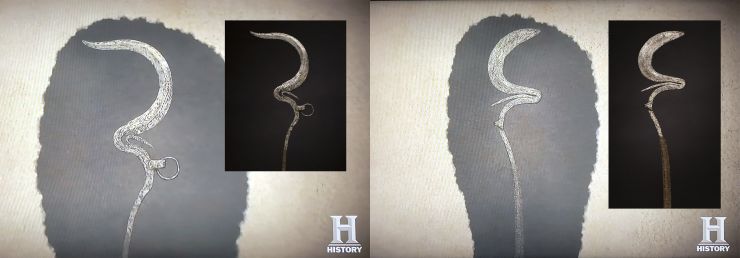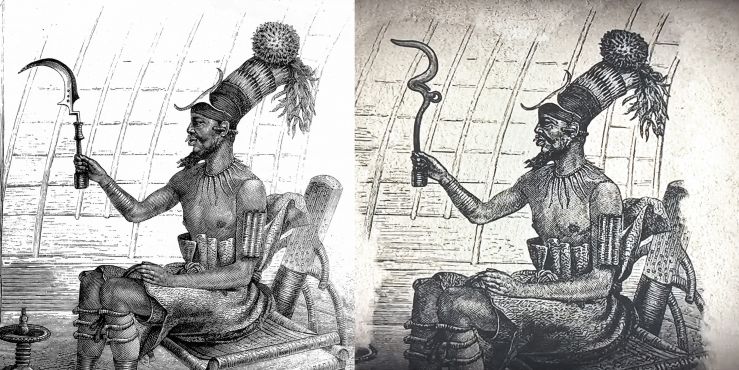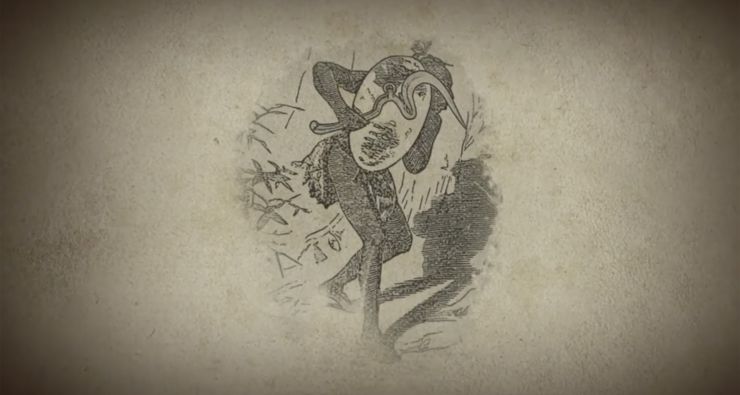Forged in Fire
“The Sengese.” S5 Ep25, Aug 28 2018, History Channel.
This is the History Channel’s description of the sengese:
“Sengese are African throwing knives [FALSE] crafted for over a hundred years by blacksmiths in the Mandara mountains in central Africa [TRUE]. They are typically about two feet long [TRUE], featuring a double-edged blade [FALSE] with a shape resembling the letter F [TRUE]. Warriors often carried two or three sengese in combat [FALSE], sometimes attaching cords to metal rings for easy retrieval at a distance [FALSE]. As a throwing weapon [FALSE], its lethal range was approximately 60 feet [FALSE & INVENTED], but it was also wielded one-handed [TRUE] in conjunction with a shield [FALSE] during close combat. Today, its extraordinary shape and design make it a natural in ceremonial applications, and it carries great status for its owner, and high value in trade [TRUE].”
Information on the sengese is available from a number of sources, including this website, and the fact that the History Channel invited me to consult on the program encouraged me to believe that accuracy would be a prime consideration in the creation of each episode. Unfortunately, this turns out not to be the case.

On this website, the sengese is described this way: “too heavy to be thrown, the sengese knife was reserved for use as a hand weapon and a prestige symbol. These prestige weapons were part of the ceremonial dress of adult men, raised during official events, but also used ‘for strolling in public’” (Elsen, De fer et de fierté, 2003; Westerdijk, African Metal Implements, 1984).
Unfortunately, the History Channel went a step further with this episode: they altered a famous illustration from 1870 – that of King Mbunza of the Mangbetu holding an Nagata knife, drawn by George Schweinfurth, a German botanist who was the first European to visit the court of a Mangbetu king (© Harper & Bros. Publishing, 1874). The History Channel manipulated this image so that it showed this Mangbetu king (from the D.R. Congo) holding a sengese knife from Cameroon – an impossible combination.

One reason that the manipulated illustration above is so preposterous is that the Mangbetu (depicted in the original image, left) inhabit the northeastern D.R. Congo, more than 900 miles to the east of the Mafa (makers of the sengese), who inhabit northern Cameroon / eastern Nigeria. These are two distant cultures that would not interact, especially not in the late 19th century (1874), when the illustration was created. But of course, the History Channel went one step further, and manipulated another historical image - that of a Zulu warrior holding a Zulu shield, with a sengese artificially placed in his hand.

This shield type was used by the Zulu, Xhosa, Ndebele, and Swazi peoples, who inhabited South Africa, Lesotho, Malawi, and Swaziland, areas that are more than 2,500 miles away from the Mafa (makers of the sengese) in northern Cameroon / eastern Nigeria.
Innocent uninformed mistakes are forgivable. Deliberately altering historical documents is an entirely separate issue. The History Channel is actively engaged in the latter – manipulating the historical record to improve ratings.